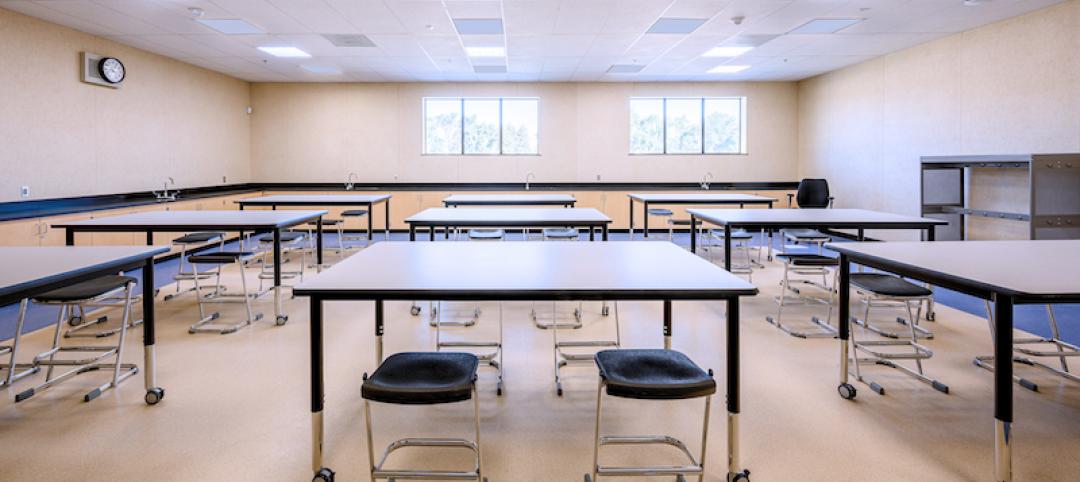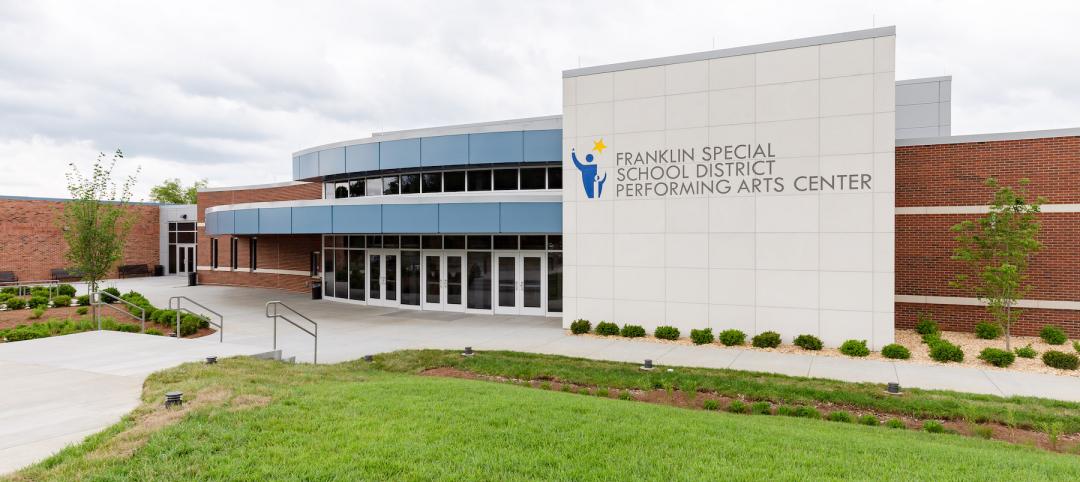 |
| The Haverford School campus was active during construction, so the soccer team had to practice within 10 feet of where the Upper School’s site fencing had been erected. |
Imagine this scenario: You're planning a $32.9 million project involving 112,000 sf of new construction and renovation work, and your job site is an active 32-acre junior-K-to-12 school campus bordered by well-heeled neighbors who are extremely concerned about construction noise and traffic.
Add to that the fact that within 30 days of groundbreaking, the general contractor gets canned. And one more thing: you have 15 months until the school bell rings.
This nightmare situation is exactly what Mike Rufo faced as construction manager for The Haverford School, a private school for 981 boys, on Philadelphia's Main Line. Rufo, owner of Rufo Contracting Inc. of Conshohocken, Pa., had worked with the school since 1992, when the institution launched a 15-year program to upgrade its campus. The project in question—construction of a new Upper School building and a new library totaling 87,000 sf and the renovation of Wilson Hall, the school's original 25,000-sf, 1903 classroom building—would be his last for the client, and one he would not forget.
 |
| The brick and glass Upper School (above) angles around to create a nook for the amphitheater. The 87,000 sf of new construction connects to the renovated Wilson Hall (below) to create the school’s new face. |
 |
In July 2007, with the original GC out, Rufo's most pressing concern was finding a qualified replacement—fast! Three firms looked at the project schedule and turned him down flat. With less than 400 days before the opening day, Rufo contracted with INTECH Construction of Philadelphia. The new GC took over a job site where demolition had started, the first foundations had been poured, the installation of sheeting, shoring, and soil nailing had begun, and steel was on order.
INTECH also inherited a project located in a residential neighborhood where on-site work was limited to the hours from 8 am to 6 pm, and never on Sunday. Deliveries could not be made using residential streets. Well-connected neighbors made sure these rules were enforced.
INTECH's first task was reassuring the remaining Building Team members—including a number of worried subcontractors and the equally nervous designer—that the project schedule could be met. Philadelphia-based MGA Partners Architects had worked with INTECH before, but they were concerned that the grueling timeline would force INTECH to value engineer the project and make compromising design modifications.
 |
| Numerous gathering and work spaces scattered throughout the project, including a columned seating area (top) and glass meeting pods (below), are designed to foster collaborative learning and social interaction. |
 |
MGA's design called for the combined Upper School building and Wilson Hall to become the new face of the campus. The new brick, glass, and steel facility would be connected to the renovated fieldstone and wood-framed Wilson Hall via a glass and limestone entrance pavilion. The sleek new Severinghaus Library would be tucked behind the 105-year-old Wilson Hall. Extensive glazing and curtain wall construction would open up the buildings to the outside, flooding the well-equipped and highly detailed classrooms, science labs, art studios, study nooks, and gathering spaces with daylight. The architects designed the project to achieve LEED Gold certification (still pending).
Rather than compromise the building's design integrity or sustainability efforts, INTECH instead reworked the schedule to break things down into more manageable chunks, called fragnets—for “fragmented networks of sub-projects”—to sequence the work more effectively. INTECH also asked MGA to provide an on-site architect so that decisions about any absolutely necessary modifications could be made quickly and in keeping with the original design intent. The cost of an on-site architect was not in the school's original budget, but the headmaster, Dr. Joseph Cox, realizing the value of having an MGA architect on site, pushed through approval of the additional expense.
The new sequencing scheme made all the difference. For example, the Building Team reworked the schedule so that interior work on the Upper School building could begin early. Fabrication of the project's cast stone detailing was more closely coordinated with the installation of the brick walls. The millwork and casework packages were reworked to comply with the integrity of the design but at a lower cost. Architectural metals and ornamental stairs were modified so that they could be installed faster, with no negative impact on the design intent.
Last-minute on-site changes like these can kill a project schedule, but the opposite was true at The Haverford School. The entire project was completed in August 2008—just in time for the start of the academic year.
“They did a great job on schedule,” said Building Team Awards judge Tracy Nicholas, VP, Alter Construction Management of Skokie, Ill. “There was great collaboration. Logistically, this was a difficult job with multiple departments, and they still did it all in 15 months.”
Related Stories
Giants 400 | Aug 20, 2022
Top 180 Architecture Firms for 2022
Gensler, Perkins and Will, HKS, and Perkins Eastman top the rankings of the nation's largest architecture firms for nonresidential and multifamily buildings work, as reported in Building Design+Construction's 2022 Giants 400 Report.
Giants 400 | Aug 19, 2022
2022 Giants 400 Report: Tracking the nation's largest architecture, engineering, and construction firms
Now 46 years running, Building Design+Construction's 2022 Giants 400 Report rankings the largest architecture, engineering, and construction firms in the U.S. This year a record 519 AEC firms participated in BD+C's Giants 400 report. The final report includes more than 130 rankings across 25 building sectors and specialty categories.
Daylighting | Aug 18, 2022
Lisa Heschong on 'Thermal and Visual Delight in Architecture'
Lisa Heschong, FIES, discusses her books, "Thermal Delight in Architecture" and "Visual Delight in Architecture," with BD+C's Rob Cassidy.
| Aug 9, 2022
Designing healthy learning environments
Studies confirm healthy environments can improve learning outcomes and student success.
K-12 Schools | Aug 1, 2022
Achieving a net-zero K-12 facility is a team effort
Designing a net-zero energy building is always a challenge, but renovating an existing school and applying for grants to make the project happen is another challenge entirely.
Education Facilities | Jul 26, 2022
Malibu High School gets a new building that balances environment with education
In Malibu, Calif., a city known for beaches, surf, and sun, HMC Architects wanted to give Malibu High School a new building that harmonizes environment and education.
Daylighting | Jul 15, 2022
Tubular system provides daylight for modular school with small windows
Tubular system provides daylight for modular school with small windows.
K-12 Schools | Jun 4, 2022
A school district in Tennessee holds ceremonies for two new student facilities
A new gym and performance art center were designed and built by the same firms.
Codes and Standards | Jun 2, 2022
Guide helps schools find funding for buildings from federal, state government
New Buildings Institute (NBI) recently released a guide to help schools identify funding programs for facilities improvements available from federal and state government programs.
Coronavirus | May 20, 2022
Center for Green Schools says U.S. schools need more support to fight COVID-19
The Center for Green Schools at the U.S. Green Building Council released a new report detailing how school districts around the country have managed air quality within their buildings during the second year of the COVID-19 pandemic.
















